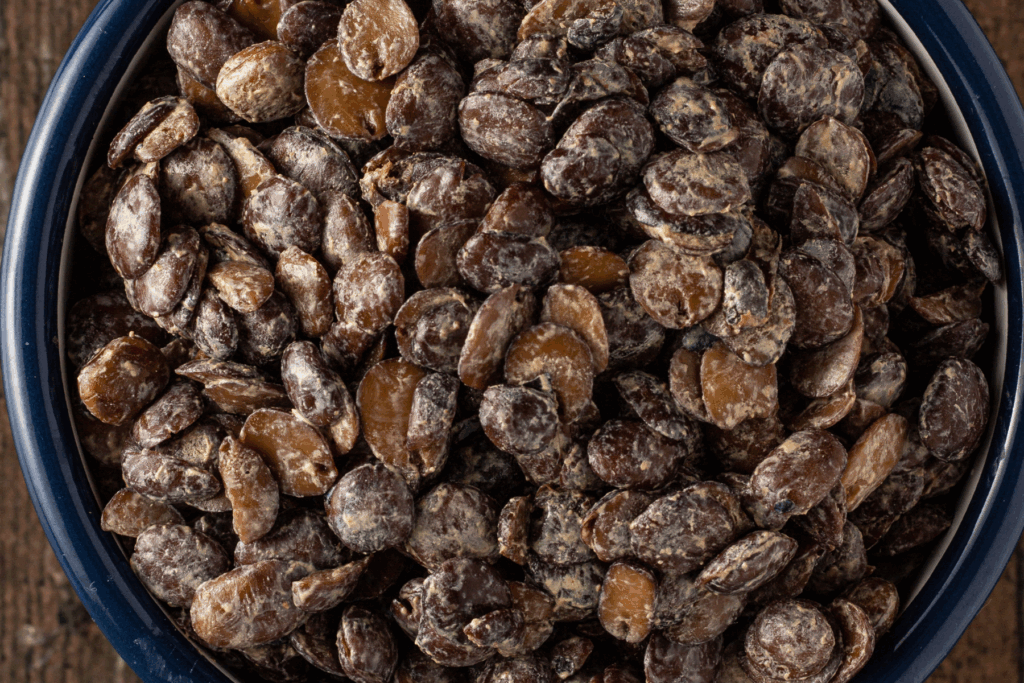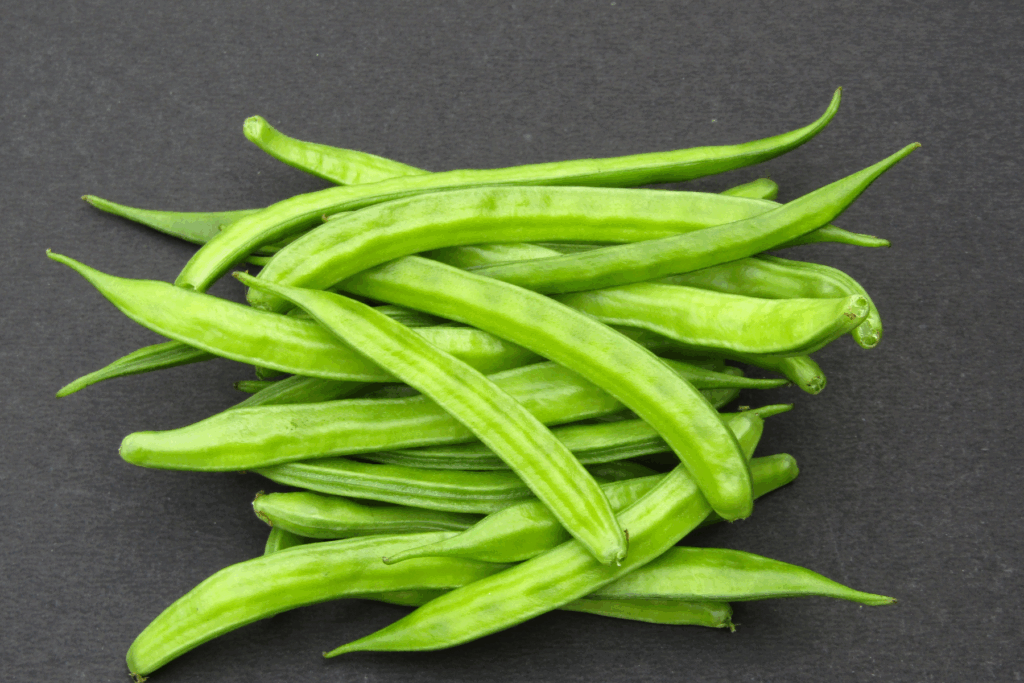


Everything You Need To Know About Gums
Gums are additives used in plant-based milk products to stabilize, emulsify, and thicken. Essentially, we are taking plant-based ingredients and helping them become a product similar to the consistency of whole milk. Gum additives are used to make the consistency of food products smooth and palatable.
All the gums used in these plant-based milks are generally considered safe, but if consumed in excess may potentially cause GI issues [2,19, 20]. When recommending milk for kids over 12 months of age, we recommend around 16-20 ounces per day. For children with a diagnosis like IBS or other gut health issues, it is encouraged to be more mindful of limiting these gums if you are noticing negative symptoms when they are consumed.
Milks are not always needed or required in your child’s diet, but it can be an incredibly helpful way to meet your child’s high calcium needs (700mg calcium a day between 1-3 years of age)! Focusing on a calcium-rich, whole-food diet can be done as a substitute instead of providing fortified milks. You can find out many different ways to meet your child’s nutrient needs in this blog post and my full milk transition webinar here.
Now, let’s discuss the current evidence surrounding the top three most common gums used in fortified milks – guar gum, xanthan gum, and locust bean gum.
Xanthan Gum
Xanthan gum is a soluble fiber carbohydrate and a common food additive used to thicken or stabilize products, including some infant and toddler formulas or special medical foods (FSMPs). It has also been found to help reduce blood glucose levels and cholesterol [1].
According to the European Food Safety Authority (EFSA), current research shows that xanthan gum is safe for infants and young children when used at the levels typically added by the food industry [1].
It has relatively no nutritional value, being low in calories and carbohydrates. Research shows that it does not cause cancer or genetic damage, and it is not absorbed into the body in its original form. Instead, it is broken down by healthy bacteria in the gut [1,2].
Some studies show that xanthan gum may act as a natural laxative, which can increase stool output and frequency of bowel movements, and may also cause gas or bloating in some individuals [2].
With this current consensus on research, the FDA and EFSA state that there is no need to worry about the safety of xanthan gum. However, if your child experiences tummy troubles like gas or loose stools, it may be worth discussing with your healthcare provider.
Guar Gum
Guar gum is a polysaccharide extracted from guar beans that has thickening and stabilizing properties useful in foods. It has also been shown to be a soluble fiber that can reduce blood glucose levels and cholesterol, while reducing the risk of heart disease. Guar gum can also be purchased as a fiber supplement to help with the management of GI issues and increase overall fiber intake for adults [3,4,5].
One important thing to note is that guar gum has such a large fiber content that if consumed in excess or without adequate hydration, it can potentially lead to intestinal blockage [21]. This negative health impact has only been seen in cases where adults were taking guar gum supplements, and it has not been seen with the consumption of milk containing guar gum.
There is limited data on the benefits or concerns with guar gum intake in infants and young children. If abdominal discomfort is noted, the amount of milk consumed with guar gum should be decreased or avoided. Due to the lack of data, we cannot adequately assess the safety of guar gum in infants and young children at this time.
The US Food and Drug Administration has given guar gum a status of “generally recognized as safe.” They have also established upper limits for the amount of guar gum that may be in any food material [6]. These limits are 2% for fats, oils, processed vegetable and vegetable juices, and 0.35% for baked goods and baking mixes. This can provide parents and caregivers peace of mind that guar gum is not added in high amounts within food products.
Locust Bean Gum
Locust bean gum is a polysaccharide extracted from the seeds of the carob tree. It is a soluble fiber that is indigestible and fermented by the gut bacteria [19]. Locust bean gum is used in foods as a thickener and stabilizer to improve texture and mouthfeel, and is used in ice cream to reduce crystal formation [7,8]. In the Code of Federal Regulations, locust bean gum is classified as “generally recognized as safe” by the FDA [9].
The European Food Safety Authority also concluded locust bean gum has no safety concerns for the general population in a 2017 reevaluation study (1). As with guar gum, maximum usage levels have been established for locust bean gum: 0.15% in baked goods and baking mixes, 0.25% in beverages, 0.8% in cheese, 0.75% in gelatins, puddings and fillings, 0.75% in jams and jellies, and 0.5% in all other food categories.
As with all the gums discussed in this blog, locust bean gum may cause GI concerns like gas and diarrhea [19]. Locust bean gum is used in other countries to help with reflux in certain anti-reflux infant formulas, but is currently not on the market in formulas within the U.S [12-16].
In 2016, the JECFA (Joint FAO/WHO Expert Committee on Food Additives) determined there was not enough evidence from the studies to justify the use of locust bean gum in infant formulas [18]. There are some studies that show concerns with locust bean gum in infant formula impacting mineral absorption and potential heavy metal contamination due to a long history of soil contamination. [17]. As a result, a reevaluation study was done in 2023, and recommendations were made to improve the safety of locust bean gum in infant formulas- but as mentioned previously, this does not apply to the U.S. [17]. One last note, there have been some reports of allergic reactions when consuming locust bean gum; however, most cases were from occupational exposure.
What Does All Of This Mean for My Little One?
From the available research, these gums have been deemed safe for consumption, with upper limits established. If your child is struggling with GI issues when consuming products with gums, it may warrant removing these foods from their diet. As a mom with a child with multiple allergies, I am thankful for the technology we have to use plant-based milks as an alternative way to help my child meet their nutrient needs.
As with all foods, I believe that moderation is key. This blog is to help provide the most up-to-date guidance on this topic as of May 2025. Research is ever-changing, and my stance on gums may change if more research becomes available on any potential negative health impacts, but at this time, I do not believe there is a reason to fear these gums.
References:
- EFSA Panel on Food Additives and Nutrient Sources added to Food (ANS); Mortensen A, Aguilar F, Crebelli R, Di Domenico A, Frutos MJ, Galtier P, Gott D, Gundert-Remy U, Lambré C, Leblanc JC, Lindtner O, Moldeus P, Mosesso P, Oskarsson A, Parent-Massin D, Stankovic I, Waalkens-Berendsen I, Woutersen RA, Wright M, Younes M, Brimer L, Christodoulidou A, Lodi F, Gelgelova P, Dusemund B. Re-evaluation of xanthan gum (E 415) as a food additive. EFSA J. 2017 Jul 14;15(7):e04909. doi: 10.2903/j.efsa.2017.4909. PMID: 32625570; PMCID: PMC7009887.
- Ostrowski MP, La Rosa SL, Kunath BJ, Robertson A, Pereira G, Hagen LH, Varghese NJ, Qiu L, Yao T, Flint G, Li J, McDonald SP, Buttner D, Pudlo NA, Schnizlein MK, Young VB, Brumer H, Schmidt TM, Terrapon N, Lombard V, Henrissat B, Hamaker B, Eloe-Fadrosh EA, Tripathi A, Pope PB, Martens EC. Mechanistic insights into consumption of the food additive xanthan gum by the human gut microbiota. Nat Microbiol. 2022 Apr;7(4):556-569. doi: 10.1038/s41564-022-01093-0. Epub 2022 Apr 1. PMID: 35365790; PMCID: PMC11537241.
Guar Gum Sources:
3. Prieto PG, Cancelas J, Villanueva-Peñacarrillo ML, Malaisse WJ, Valverde I. Short-term and long-term effects of guar on postprandial plasma glucose, insulin and glucagon-like peptide 1 concentration in healthy rats. Horm Metab Res. 2006 Jun;38(6):397-404. doi: 10.1055/s-2006-944544. PMID: 16823722.
4. Javad Alaeian M, Pourreza S, Yousefi M, Golalipour E, Setayesh L, Zeinali Khosroshahi M, Bagheri R, Ashtary-Larky D, Wong A, Zamani M, Asbaghi O. The effects of guar gum supplementation on glycemic control, body mass and blood pressure in adults: A GRADE-assessed systematic review and meta-analysis of randomized clinical trials. Diabetes Res Clin Pract. 2023 May;199:110604. doi: 10.1016/j.diabres.2023.110604. Epub 2023 Mar 22. PMID: 36958432.
5. Setayesh L, Pourreza S, Zeinali Khosroshahi M, Asbaghi O, Bagheri R, Rezaei Kelishadi M, Wong A, Clark CCT, Larky DA, Suzuki K, Ghanavati M. The effects of guar gum supplementation on lipid profile in adults: a GRADE-assessed systematic review, meta-regression and dose-response meta-analysis of randomised placebo-controlled trials. Br J Nutr. 2023 May 28;129(10):1703-1713. doi: 10.1017/S0007114522002136. Epub 2022 Jul 15. PMID: 35837742.
6. EFSA Panel on Food Additives and Nutrient Sources added to Food (ANS), Mortensen, A., Aguilar, F., Crebelli, R., Di Domenico, A., Frutos, M. J., Galtier, P., Gott, D., Gundert-Remy, U., Lambré, C., Leblanc, J. C., Lindtner, O., Moldeus, P., Mosesso, P., Oskarsson, A., Parent-Massin, D., Stankovic, I., Waalkens-Berendsen, I., Woutersen, R. A., Wright, M., … Dusemund, B. (2017). Re-evaluation of guar gum (E 412) as a food additive. EFSA journal. European Food Safety Authority, 15(2), e04669. https://doi.org/10.2903/j.efsa.2017.4669
Locust Bean Sources:
7. Petitjean M, Isasi JR. Locust Bean Gum, a Vegetable Hydrocolloid with Industrial and Biopharmaceutical Applications. Molecules. 2022 Nov 26;27(23):8265. doi: 10.3390/molecules27238265. PMID: 36500357; PMCID: PMC9736161.
8. Barak S, Mudgil D. Locust bean gum: processing, properties and food applications–a review. Int J Biol Macromol. 2014 May;66:74-80. doi: 10.1016/j.ijbiomac.2014.02.017. Epub 2014 Feb 16. PMID: 24548746.PMID: 24548746
9. https://www.hfpappexternal.fda.gov/scripts/fdcc/index.cfm?set=FoodSubstances&id=LOCUSTCAROBBEANGUM
10. https://www.ecfr.gov/current/title-21/chapter-I/subchapter-B/part-184/subpart-B/section-184.1343
11. Hawley B, Cummings KJ, Mohammed M, Dimmock AE, Bascom R. Allergic sinusitis and severe asthma caused by occupational exposure to locust bean gum: Case report. Am J Ind Med. 2017 Jul;60(7):658-663. doi: 10.1002/ajim.22725. Epub 2017 May 12. PMID: 28497854; PMCID: PMC5745799.
Source for locust bean in anti-reflux formula:
12. Bosscher D, Van Caillie-Bertrand M, Deelstra H. Do thickening properties of locust bean gum affect the amount of calcium, iron and zinc available for absorption from infant formula? In vitro studies. Int J Food Sci Nutr. 2003 Jul;54(4):261-8. doi: 10.1080/09637480120092080. PMID: 12850887.
13. González-Bermúdez CA, Frontela-Saseta C, López-Nicolás R, Ros-Berruezo G, Martínez-Graciá C. Effect of adding different thickening agents on the viscosity properties and in vitro mineral availability of infant formula. Food Chem. 2014 Sep 15;159:5-11. doi: 10.1016/j.foodchem.2014.02.168. Epub 2014 Mar 12. PMID: 24767020.
14. Meunier L, Garthoff JA, Schaafsma A, Krul L, Schrijver J, van Goudoever JB, Speijers G, Vandenplas Y. Locust bean gum safety in neonates and young infants: an integrated review of the toxicological database and clinical evidence. Regul Toxicol Pharmacol. 2014 Oct;70(1):155-69. doi: 10.1016/j.yrtph.2014.06.023. Epub 2014 Jul 2. PMID: 24997231.
15. Tounian P, Meunier L, Speijers G, Oozeer R, Vandenplas Y. Effectiveness and Tolerance of a Locust Bean Gum-Thickened Formula: A Real-Life Study. Pediatr Gastroenterol Hepatol Nutr. 2020 Nov;23(6):511-520. doi: 10.5223/pghn.2020.23.6.511. Epub 2020 Nov 5. PMID: 33215022; PMCID: PMC7667228.
16. Salvatore S, Klymenko V, Karpushenko Y, Durczak-Hilleman M, Loboda A, Petrashenko V, Olechowski W, Lista G, Meneghin F, Amodio S, Bongers A, Ludwig T, Vandenplas Y. Tolerance and Safety of an Anti-Regurgitation Formula Containing Locust Bean Gum, Pre-, and Postbiotics: A Multi-Country Multi-Center Prospective Randomized Controlled Study in Infants with Regurgitation. Nutrients. 2024 Mar 20;16(6):899. doi: 10.3390/nu16060899. PMID: 38542810;
17. EFSA FAF Panel (EFSA Panel on Food Additives and Flavourings), Younes M, Aquilina G, Castle L, Degen G, Engel K-H, Fowler PJ, Frutos Fernandez MJ, Fürst P, Gürtler R, Husøy T, Manco M, Mennes W, Moldeus P, Passamonti S, Shah R, Waalkens Berendsen I, Wright M, Wölfle D, Dusemund B, Mortensen A, Turck D, Barmaz S, Mech A, Rincon AM, Tard A, Vianello G and Gundert-Remy U, 2022. Re-evaluation of locust bean gum (E 410) as a food additive in foods for infants below 16 weeks of age and follow-up of its re-evaluation as a food additive for uses in foods for all population groups. EFSA Journal 2023; 21(2):7775, 70 pp. https://doi.org/10.2903/j.efsa.2023.777 18. WHO | JECFA. (2016). Who.int. https://apps.who.int/food-additives-contaminants-jecfa-database/Home/Chemical/940
19. EFSA Panel on Food Additives Nutrient Sources added to Food (ANS); Mortensen A, Aguilar F, Crebelli R, Di Domenico A, Frutos MJ, Galtier P, Gott D, Gundert-Remy U, Lambré C, Leblanc JC, Lindtner O, Moldeus P, Mosesso P, Oskarsson A, Parent-Massin D, Stankovic I, Waalkens-Berendsen I, Woutersen RA, Wright M, Younes M, Brimer L, Peters P, Wiesner J, Christodoulidou A, Lodi F, Tard A, Dusemund B. Re-evaluation of locust bean gum (E 410) as a food additive. EFSA J. 2017 Jan 20;15(1):e04646. doi: 10.2903/j.efsa.2017.4646. PMID: 32625248; PMCID: PMC7010100.
20. Mysonhimer AR, Holscher HD. Gastrointestinal Effects and Tolerance of Nondigestible Carbohydrate Consumption. Adv Nutr. 2022 Dec 22;13(6):2237-2276. doi: 10.1093/advances/nmac094. PMID: 36041173; PMCID: PMC9776669.
21. Lewis JH. Esophageal and small bowel obstruction from guar gum-containing “diet pills”: analysis of 26 cases reported to the Food and Drug Administration. Am J Gastroenterol. 1992 Oct;87(10):1424-8. PMID: 1329494.
Want more? My course is a 100% evidence-based approach to starting solids in a way that encourages a healthy dietary pattern from the start.
Check out the Starting Solids 101 Course now!
Access Course Now

Cinthia Scott is a Registered Dietitian (RD) and International Board Certified Lactation Consultant (IBCLC) with over 10 years experience in the field of dietetics. Cinthia focuses on ensuring optimal nutrition in the first 1000 days of life to ensure optimal growth and development as well as set the stage for long-term health. Cindy is an author, starting solids expert, and advocate for caregivers receiving evidence based education and support surrounding breastfeeding and starting solids.
Cinthia is co-author of the 101beforeone Starting Solids Book, “101beforeone -baby-led feeding cookbook,” and is the founder and owner of The Baby Dietitian LLC which is her private practice built to provide virtual 1:1 services for caregivers surrounding infant nutrition, toddler nutrition, and breastfeeding support. Cinthia is also the creator of the Starting Solids 101 Program which provides caregivers 1:1 support from a Pediatric Dietitian on how to provide optimal nutrition from the start and create healthy eating habits that will last their whole lifetime. To work with Cinthia, you can access her services here.
Cinthia provides tons of free information for parents on her social media accounts as well.
- Instagram: @The.Baby.Dietitian
- Tiktok: @The.Baby.Dietitian
